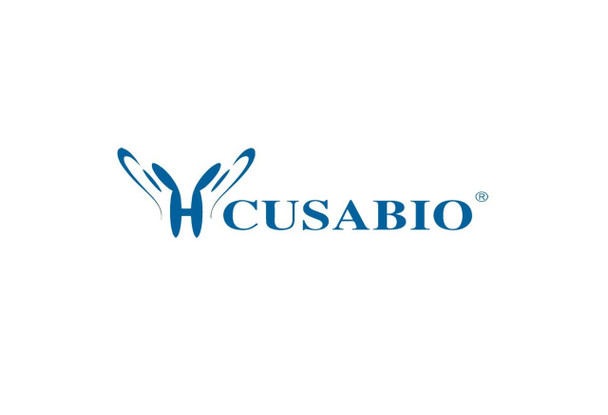Cusabio Human Recombinants
Recombinant Human SWI/SNF complex subunit SMARCC1 (SMARCC1) , partial | CSB-EP821715HU
- SKU:
- CSB-EP821715HU
- Availability:
- 3 - 7 Working Days
Description
Recombinant Human SWI/SNF complex subunit SMARCC1 (SMARCC1) , partial | CSB-EP821715HU | Cusabio
Alternative Name(s): BRG1-associated factor 155 ;BAF155SWI/SNF complex 155KDA subunitSWI/SNF-related matrix-associated actin-dependent regulator of chromatin subfamily C member 1
Gene Names: SMARCC1
Research Areas: Neuroscience
Organism: Homo sapiens (Human)
AA Sequence: IPSYASWFDYNCIHVIERRALPEFFNGKNKSKTPEIYLAYRNFMIDTYRLNPQEYLTSTACRRNLTGDVCAVMRVHAFLEQWGLVNYQVDPESRPMAMGPPPTPHFNVLADTPSGLVPLHLRSPQVPAAQQMLNFPEKNKEKPVDLQNFGLRTDIYSKKTLAKSKGASAGREWTEQETLLLLEALEMYKDDWNKVSEHVGSRTQDECILHFLRLPIEDPYL
Source: E.coli
Tag Info: N-terminal 6xHis-SUMO-tagged
Expression Region: 451-671aa
Sequence Info: Partial
MW: 41.5 kDa
Purity: Greater than 90% as determined by SDS-PAGE.
Relevance: Involved in transcriptional activation and repression of select genes by chromatin rodeling (alteration of DNA-nucleosome topology). May stimulate the ATPase activity of the catalytic subunit of the complex. Belongs to the neural progenitors-specific chromatin rodeling complex (npBAF complex) and the neuron-specific chromatin rodeling complex (nBAF complex). During neural development a switch from a st/progenitor to a post-mitotic chromatin rodeling mechanism occurs as neurons exit the cell cycle and become committed to their adult state. The transition from proliferating neural st/progenitor cells to post-mitotic neurons requires a switch in subunit composition of the npBAF and nBAF complexes. As neural progenitors exit mitosis and differentiate into neurons, npBAF complexes which contain ACTL6A/BAF53A and PHF10/BAF45A, are exchanged for homologous alternative ACTL6B/BAF53B and DPF1/BAF45B or DPF3/BAF45C subunits in neuron-specific complexes (nBAF). The npBAF complex is essential for the self-renewal/proliferative capacity of the multipotent neural st cells. The nBAF complex along with CREST plays a role regulating the activity of genes essential for dendrite growth .
Reference: A quantitative atlas of mitotic phosphorylation.Dephoure N., Zhou C., Villen J., Beausoleil S.A., Bakalarski C.E., Elledge S.J., Gygi S.P.Proc. Natl. Acad. Sci. U.S.A. 105:10762-10767(2008)
Storage: The shelf life is related to many factors, storage state, buffer ingredients, storage temperature and the stability of the protein itself. Generally, the shelf life of liquid form is 6 months at -20?/-80?. The shelf life of lyophilized form is 12 months at -20?/-80?.
Notes: Repeated freezing and thawing is not recommended. Store working aliquots at 4? for up to one week.
Function: Involved in transcriptional activation and repression of select genes by chromatin remodeling (alteration of DNA-nucleosome topology). Component of SWI/SNF chromatin remodeling complexes that carry out key enzymatic activities, changing chromatin structure by altering DNA-histone contacts within a nucleosome in an ATP-dependent manner. May stimulate the ATPase activity of the catalytic subunit of the complex
Involvement in disease:
Subcellular Location: Nucleus, Cytoplasm
Protein Families: SMARCC family
Tissue Specificity: Expressed in brain, heart, muscle, placenta, lung, liver, muscle, kidney and pancreas.
Paythway:
Form: Liquid or Lyophilized powder
Buffer: If the delivery form is liquid, the default storage buffer is Tris/PBS-based buffer, 5%-50% glycerol. If the delivery form is lyophilized powder, the buffer before lyophilization is Tris/PBS-based buffer, 6% Trehalose, pH 8.0.
Reconstitution: We recommend that this vial be briefly centrifuged prior to opening to bring the contents to the bottom. Please reconstitute protein in deionized sterile water to a concentration of 0.1-1.0 mg/mL.We recommend to add 5-50% of glycerol (final concentration) and aliquot for long-term storage at -20?/-80?. Our default final concentration of glycerol is 50%. Customers could use it as reference.
Uniprot ID: Q92922
HGNC Database Link: HGNC
UniGene Database Link: UniGene
KEGG Database Link: KEGG
STRING Database Link: STRING
OMIM Database Link: OMIM









